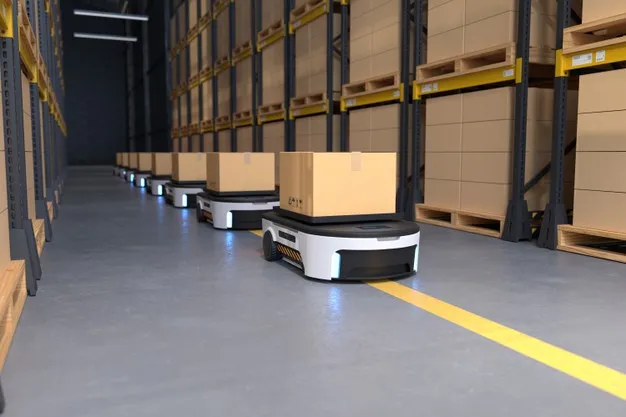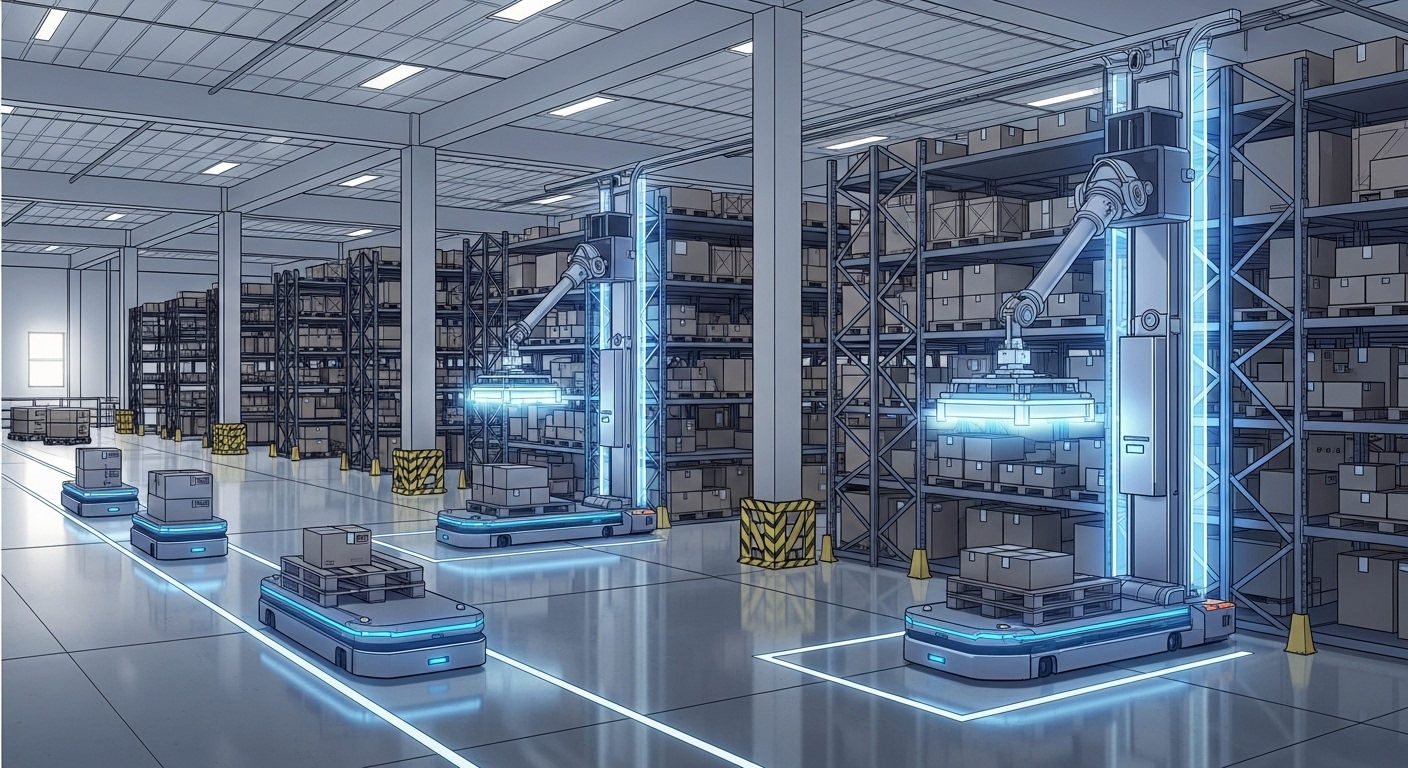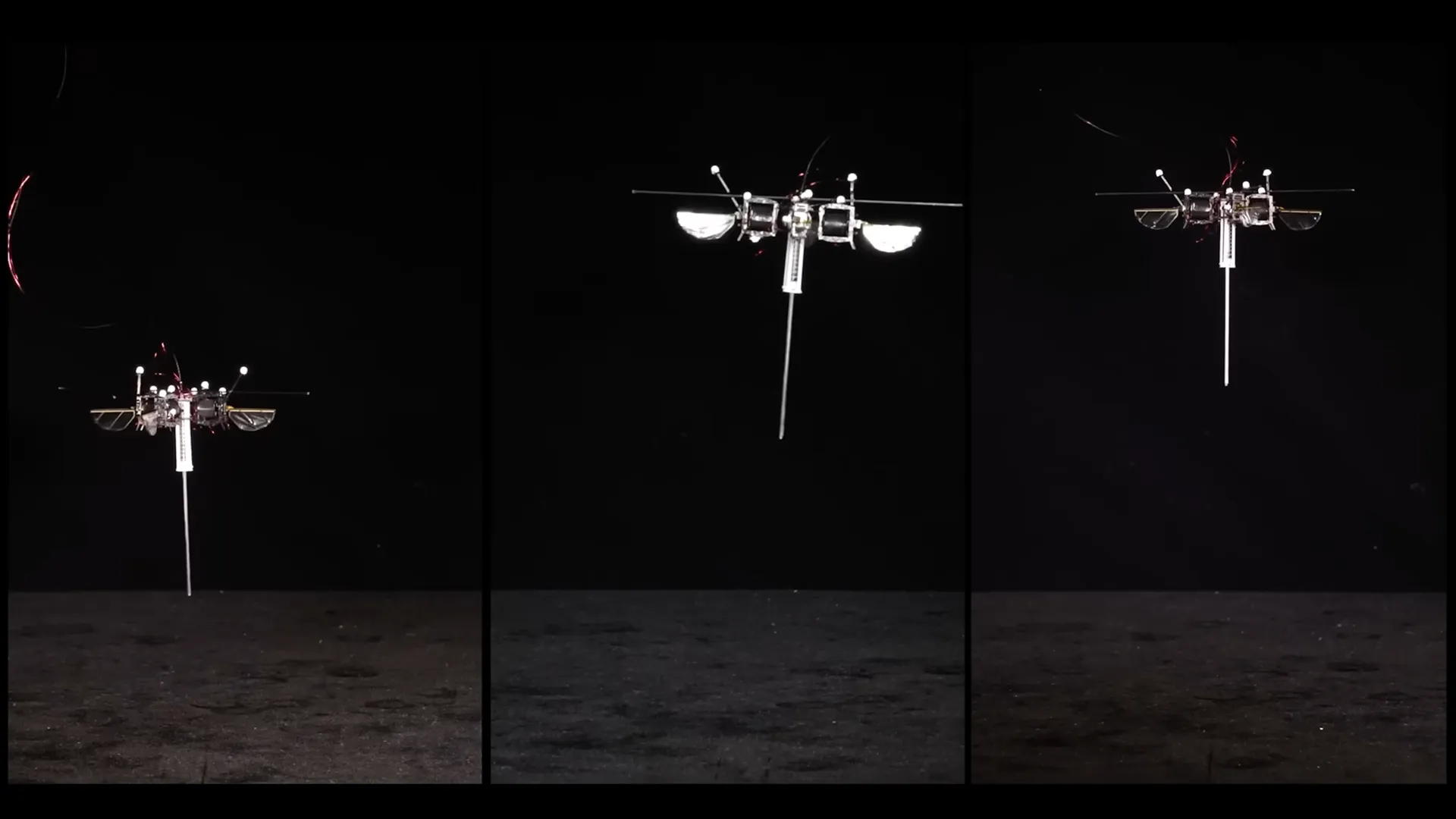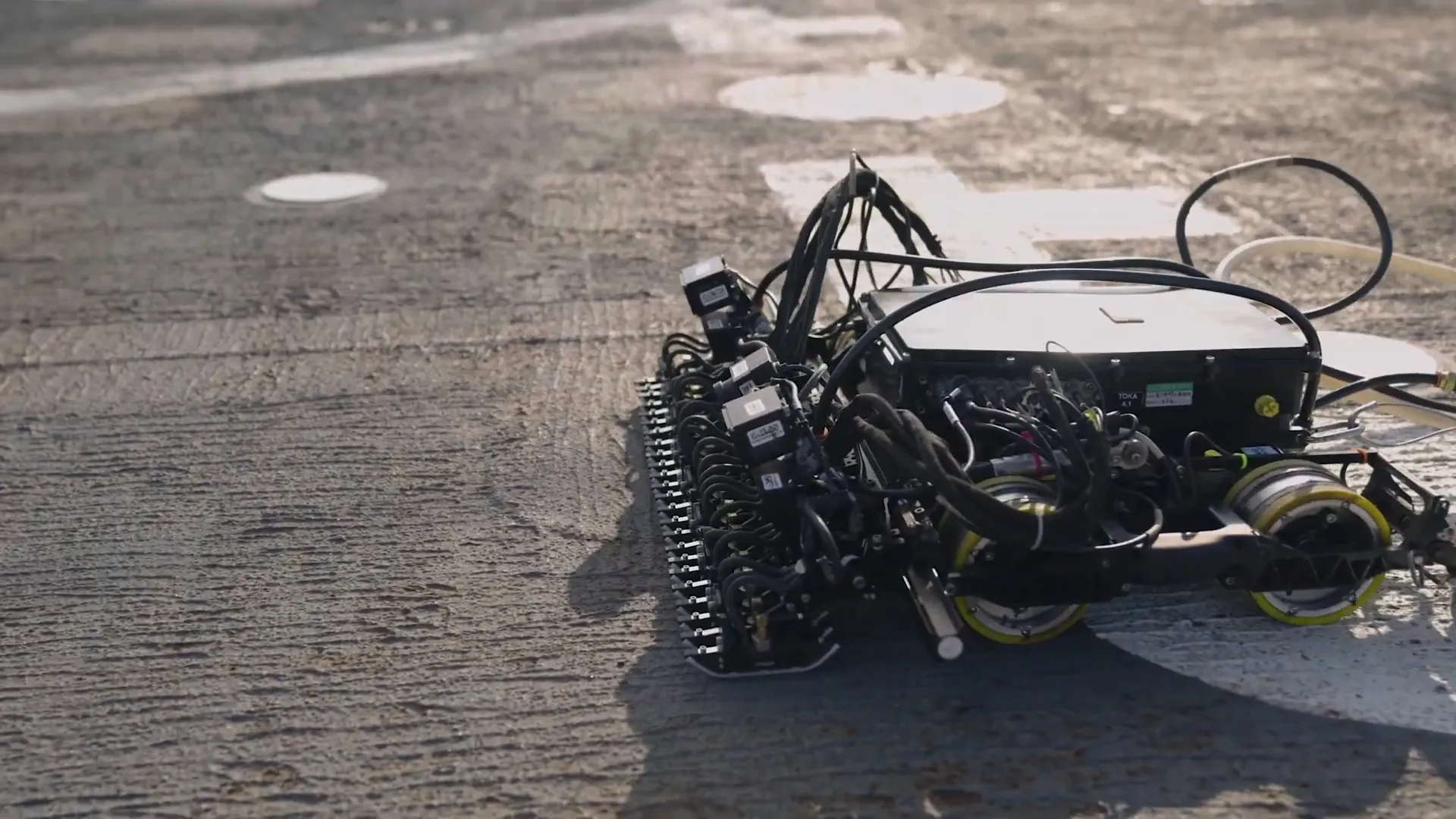- AMRs vs. AGVs: The shift from rigid, track-dependent Automated Guided Vehicles (AGVs) to intelligent, flexible Autonomous Mobile Robots (AMRs) that can dynamically re-route around obstacles.
- The Power of SLAM: AMRs achieve their autonomy using SLAM (Simultaneous Localization and Mapping) to build real-time maps and pinpoint their location.
- Logistics Transformation: AMRs enable a more efficient, scalable, and safer workflow, driving the shift to "Goods-to-Person" systems in warehouses.
The rhythm of the old factory was a predictable one: the rumble of fixed conveyor belts, the screech of forklifts, and the ceaseless footfalls of workers navigating complex pathways. It was a world of bottlenecks, rigid infrastructure, and constant human-machine interaction that will essentially came with inherent inefficiencies and safety concerns. Today, a new player has arrived, not to replace, but to redefine this landscape, promising a future of flexibility, efficiency, and safety.
A Tale of Two Robots: The Workhorse vs. The Pioneer
Well, to understand this revolution, we must first distinguish between two generations of mobile robotics:
The Automated Guided Vehicle (AGV) is the venerable workhorse of industrial automation, a first-generation solution that has reliably served in factories for decades. Imagine a train on a track, but invisible. AGVs follow pre-defined, fixed paths, typically guided by embedded wires in the floor, magnetic tape, or beacons. They are efficient and precise within their prescribed lanes. However, their rigidity is also their limitation: if an AGV encounters an unexpected obstacle—a box out of place, a human walking by—the entire operation grinds to a halt. It simply stops and waits, unable to deviate from its path.

Enter the Autonomous Mobile Robot (AMR), the trailblazing pioneer of modern logistics. Unlike its tethered predecessor, the AMR is truly intelligent. It sees, understands, and navigates its environment dynamically. Equipped with an array of sensors, cameras, and sophisticated onboard computing, an AMR doesn't follow a fixed path; it understands the layout of the facility. If an AMR encounters an obstacle—be it a fallen pallet or a busy human coworker—it simply re-routes itself, finding the most efficient alternative path to its destination without interruption. This inherent flexibility is the key to its transformative power.

The Engine of Autonomy: Brains and Brawn on Wheels
So, how do these intelligent machines navigate such complex, ever-changing environments? The secret lies in a technology called SLAM (Simultaneous Localization and Mapping). In short, SLAM allows the robot to build a detailed digital map of its surroundings while simultaneously figuring out its precise location on that map—all in real-time. This dynamic self-awareness is what enables true, obstacle-avoiding autonomy.
Leading the charge in deploying these clever machines are several top contenders in the market:
- Kion Group (Dematic): A global giant, offering a vast range of material handling solutions, with AMRs integrated into comprehensive automated warehouse systems. Their strength lies in large-scale, enterprise-level deployments.
- Teradyne (MiR and AutoGuide Mobile Robots): MiR (Mobile Industrial Robots) focuses on highly flexible, collaborative AMRs for lighter loads, emphasizing ease of programming and deployment. AutoGuide extends their reach into heavy-duty material transport, often replacing forklifts.
- Geek+: A rapidly expanding global leader, known for its extensive range of AMRs, particularly its "Goods-to-Person" systems and smart logistics solutions, making them a dominant force in e-commerce fulfillment.
- Locus Robotics: Specializes in collaborative AMRs for fulfillment centers, focusing on optimizing human picker routes and increasing throughput, often operating alongside human workers.
The key differences between their fleets often revolve around payload capacity (from small shelf-carriers to massive pallet movers), their primary workflow focus (Goods-to-Person vs. heavy transport vs. collaborative), and the sophistication of their proprietary fleet management software which orchestrates hundreds of robots seamlessly.
The Transformation: From Factory to Port and Beyond
The core impact of AMRs is a powerful trifecta of benefits revolutionizing operations:
The first benefit is Flexibility & Scalability. Imagine a company needing to reorganize its warehouse layout. In the past, this might mean shutting down operations for weeks to rip up and re-lay conveyor belts or magnetic tracks. With AMRs, it's a digital deployment: new maps can be uploaded in hours, and robots can be added or removed from the fleet with minimal disruption. This adaptability allows businesses to scale operations up or down with unprecedented agility.
Next comes Efficiency & Throughput. AMRs work tirelessly, 24/7, without breaks, sick days, or fatigue. They are masters of optimized, dynamic pathfinding. Perhaps the most revolutionary impact is the shift to "Goods-to-Person" workflows. Instead of human pickers walking miles across a warehouse to retrieve items, AMRs bring the shelves directly to the picker. This dramatically reduces wasted motion, increases picking accuracy, and supercharges overall throughput, delivering products to customers faster than ever before.
Finally, and perhaps most crucially, is Enhanced Worker Safety. The factory floor can be a hazardous place, with forklifts and manual material handling leading to accidents and injuries. AMRs, with their advanced obstacle avoidance and predictable movements, significantly reduce these risks. They are quietly retiring the most dangerous, repetitive tasks, allowing human employees to shift towards higher-value, more cognitive roles—roles that leverage their unique human creativity and problem-solving skills.
The Epilogue: A Glimpse into the Future
The journey of the New Factory Floor is far from over; it's just beginning. We are entering a collaborative dawn where Human-Robot Collaboration becomes the norm. AMRs are not simply replacing human workers; they are becoming intelligent partners, augmenting human capabilities and creating safer, more ergonomic work environments.
Every AMR moving across the floor, every package it scans, every route it takes—all of this generates a goldmine of data. This data is the foundation of Digital Twins, virtual replicas of the entire factory floor or port. These digital twins allow managers to simulate, predict, and hyper-optimize operations, anticipating bottlenecks before they occur and fine-tuning efficiency to unprecedented levels.
Ultimately, the "New Factory Floor" isn't merely about faster movement of goods; it's about redefining value. It's about creating an infinitely flexible, inherently safer, and intelligently responsive supply chain—a logistics ecosystem that can instantly adapt to a world of constant change, propelling us into a future where innovation moves at the speed of thought.






